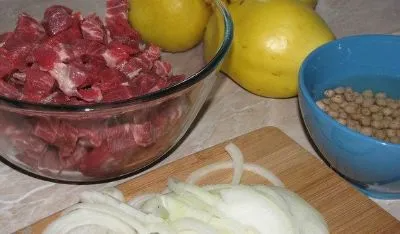Notifications

6 minutes, 25 seconds
-5 Views 0 Comments 0 Likes 0 Reviews

Cooking authentic Piti is an art rooted in centuries of Azerbaijani tradition, capturing the warmth, hospitality, and rich flavors of the region. This traditional dish, often cooked in individual clay pots, is more than just a hearty stew; it’s a symbol of Azerbaijani cultural identity. Travel In Baku, with its deep appreciation for local traditions, offers a comprehensive guide to preparing Piti at home, empowering you to bring an authentic taste of Azerbaijan to your kitchen. Whether you’re a seasoned cook or a curious beginner, understanding the step-by-step process ensures you can craft this magnificent dish and experience its cultural significance firsthand.
Selecting the Perfect Ingredients for Piti
The foundation of a true Azerbaijani Tour lies in choosing high-quality, fresh ingredients. Traditionally, the dish is made with lamb or mutton, preferably from animals raised locally for richer flavor and tenderness. The meat is usually cut into large chunks to withstand slow cooking. Chickpeas, soaked overnight to soften, are essential for their creamy texture and flavor. Potatoes, onions, and aromatic herbs such as dill, bay leaves, and coriander are added to layer flavors and create a fragrant stew. Saffron, a key spice, infuses the dish with a golden hue and distinctive aroma. Fresh vegetables and herbs purchased from local markets significantly enhance authenticity. Travel In Baku can guide you to reliable markets or local vendors to find the best ingredients for your culinary adventure.
Preparing the Clay Pots and Setting Up the Stew
One of the key elements that give Piti its authentic flavor is its traditional cooking vessel—the clay pot. Before cooking, ensure your clay pots are thoroughly cleaned and soaked in water to prevent cracking during heat. To prepare, slightly season the meat by rubbing it with salt and spices, then place the large chunks into the clay pot, layering it with chickpeas, potatoes, and herbs. The ingredients are arranged thoughtfully to allow the flavors to meld while cooking. Some cooks prefer to add a splash of water or broth, enough to just cover the ingredients, as the slow cooking process will extract flavors and tenderize the meat. Sealing the pot with dough or a lid helps trap the moisture and intensify the aroma, creating the perfect environment for a slow simmer. Travel In Baku can teach you how to handle clay pots effectively or suggest alternatives if you do not have traditional ones.
The Slow-Cooking Process: Patience is Key
Cooking Piti is a labor of love that requires patience and attention. The prepared clay pot is placed over low heat, allowing the ingredients to slowly cook for several hours—sometimes up to four hours or more, depending on the cut of meat. During this time, the meat becomes melt-in-your-mouth tender, and the flavors develop deeply within the stew. It’s important to check occasionally, ensuring the liquid level remains adequate and adjusting heat if necessary. In traditional Azerbaijani households, the slow cooking process is a communal activity, often shared among family members or friends. Patience during this stage results in a profound, aromatic dish with a perfect balance of savory, herbs, and spices—truly embodying the essence of Azerbaijani culinary craftsmanship.
Serving and Enjoying Piti the Authentic Way
Once the Piti has cooked to perfection, it’s time to serve this rich dish. The best way is directly from the clay pot, presenting it as a centerpiece during a meal of family or friends. To enhance the experience, the broth is usually ladled out first, often into small bowls, allowing you to savor the flavorful liquid. The meat and vegetables are then served alongside freshly baked Azerbaijani bread, such as tandir or lavash, which absorbs the delicious juices. Garnishes like fresh herbs, lemon wedges, or a sprinkle of sumac add extra layers of flavor. Traditionally, Piti is enjoyed slowly, allowing the flavors to mingle and creating an atmosphere of warmth and conviviality. The dish’s simplicity and depth make it a memorable part of any Azerbaijani dining experience.
Understanding the Cultural Significance of Piti
Preparing and sharing Piti is much more than cooking; it’s a cultural ritual that connects families and communities in Azerbaijan. This dish embodies the country’s pastoral history, emphasizing patience, community, and respect for tradition. Performed during special occasions, gatherings, or casual family meals, Piti reinforces bonds and celebrates Azerbaijani hospitality. Participating in the process deepens your cultural insight into Azerbaijani life and cuisine. Travel In Baku can help facilitate cultural immersion through cooking classes, local market visits, or demonstrations, giving you a firsthand experience of the tradition and significance behind every bowl of Piti.
